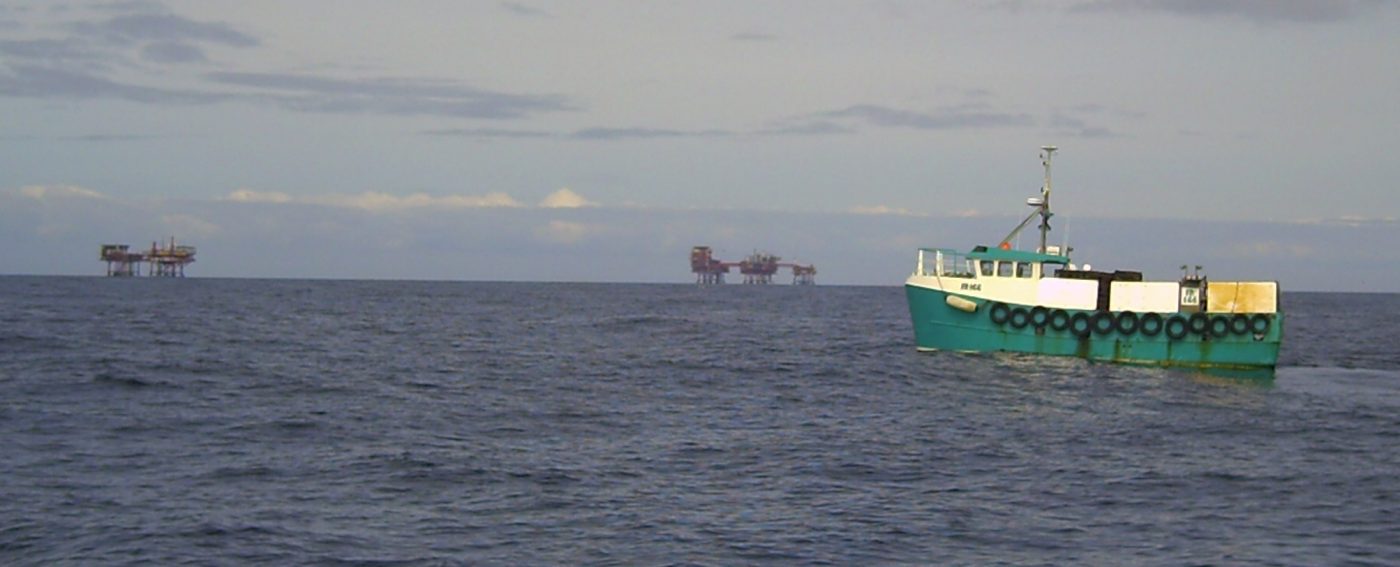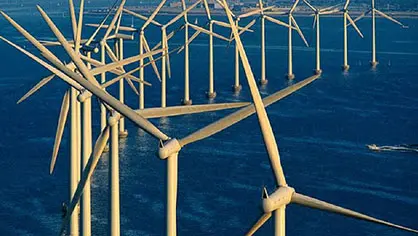As our seas are used for more and more activities it is essential that fisheries are properly accounted for when planning for other marine uses. We work to help ensure fishing interests are fully considered at all levels from high level policy through to individual marine licence decisions.
Policy
The UK Marine Policy Statement states that Marine plan authorities/ decision-makers:
· Consider the potential impacts of other developments on fishing activity, as well as potential environmental impacts – including the impacts of displacement and whether it is possible for vessels to relocate to other fishing grounds, as well as consider the potential impacts of this displacement on the viability of fish stocks
· Consider the impacts on local communities of any reduction in fishing activity, redistribution of fishing effort or associated impact on related businesses
· Encourage opportunities for co-existence between fishing and other activities (p43).
The National Policy Statement for Renewable Energy Infrastructure (EN-3, July 2011) states that:
· Early consultation should be undertaken with representatives of the fishing industry
· Assessment by the applicant should include detailed surveys of the effects on fish stocks of commercial interest and any potential reduction in such stocks, as well as any likely constraints on fishing activity
· The Planning Inspectorate (PINS) should consider the extent to which the proposed development occupies any recognised important fishing grounds and whether the project would prevent or significantly impede protection of sustainable commercial fisheries, including that caused by any safety zones and sought to design the proposal having consulted representatives of the fishing industry with the intention of minimising the loss of fishing opportunity and has been mitigated where reasonably possible
· Mitigation schemes are to be designed to enhance where reasonably possible, any potential positive benefits to the affected fishing industry and commercial fish stocks.
Oil and Gas
The development of the North Sea oil and gas fields in the 1970s was initially a source of friction between both of our industries. Since then both of our industries have learned to understand one another’s needs to the extent that today a fruitful working relationship is the norm.
At the NFFO, we continue to ensure this is still the case by working with:
· The U.K. Fisheries Offshore Oil & Gas Legacy Trust Fund Limited (FLTC) exists to manage interactions between both industries. It operates an endowment fund to offset negative legacy issues, in particular focussed on addressing fishermen’s safety
· FishSAFE provides information on the location oil and related surface and sub-surface infrastructure and an active early warning system for fishing vessels when operating in the vicinity of such infrastructure
· The Oil & Gas UK Fishermen’s Compensation Fund provides a scheme for compensation for damages to fishing gear from oil and gas related debris that cannot be attributed to a single operator. The fund is financed by Oil and Gas UK (OGUK).
Renewable Energy
The possibility for overlap with existing fishing grounds places a new emphasis on a system of marine planning that can effectively assess compatibilities and conflicts between different marine uses in order to make the most efficient use of marine space.
Wind Farms
In the vicinity of wind farms it’s unlikely fishing activities will be able to operate in the same way as in open waters, as the infrastructure of wind farms presents a potential marine hazard.
This places an emphasis on the need for good project design and good operational arrangements and protocols. Since 2002 both the fishing and marine renewables industries have worked through the Fishing Liaison with Offshore Wind and Wet Renewables (FLOWW) group to promote coexistence between both industries.
Hosted by the Crown Estate, a key activity of the group has been to develop best practice guidelines for fisheries liaison, most recently updated in 2014. This guidance provides advice to developers on liaising with the fishing industry at all stages when planning, constructing and operating projects.
We focus especially on the development of fishing liaison and coexistence plans, to outline specific operational arrangements, as well as any longer-term mitigation measures, to limit impact. These may include, for example, establishing minimum time frames for consulting and notification of works, communication of hazard information and agreed procedures for the removal of static gear from works areas and addressing any damages to gear. The Kingfisher Bulletin provides an important conduit for communicating hazard information to the fishing industry.
Cables
Cables are a potential risk to fishing activity and we are working to ensure that good practice is undertaken in order to minimise the potential for snagging risks. Often the fishing industry can provide detailed knowledge of the nature of seabed substrata that can greatly aid the planning of cable routes so that burial can be achieved.
It is essential that the fishing industry is consulted in the preparation of cable burial and protection plans which in the case of offshore wind farms are often dealt with following license consent.
It’s critical to assure the fishing industry that no snagging hazards exist post-installation and as long as the cables remain installed – this can be done through good risk assessment procedures including post-installation reports, surveys and ongoing monitoring of at-risk areas.
The detection of any emergence of cables due to seabed movements or decay of protection measures that will present a marine hazard must be communicated to the fishing fleet.
Offsetting Impacts
Despite the best of intentions, some level of disruption to existing fishing activity is inevitable and in the worst cases, usually for safety reasons, access to fishing grounds may be lost. The FLOWW group have prepared guidelines for addressing disruption settlements and community funds.
Community funds are a good way of recognising new activity coming into an area of existing activities. The West of Morecambe Fisheries Fund is a good example of joint working among developers and the locally affected fishing fleets to support projects that provide a wide benefit to the affected fishing community.



